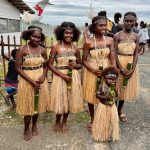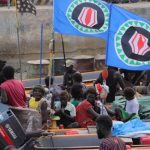Bikini Atoll is a small but historically significant location in the Pacific Ocean, often remembered for its nuclear testing legacy. However, the story of this remote atoll, its people, and its future is much more complex than just its place in nuclear history.
From its initial use as a testing ground to the challenges faced by the Bikini people, the journey of Bikini Atoll is one of resilience, struggle, and the ongoing search for justice. Let’s take a closer look at the history of Bikini Atoll, the people who call it home, and what it’s like to visit today.
The History of Bikini Atoll and the Marshall Islands
Bikini Atoll is part of the Marshall Islands, a chain of islands in the Pacific Ocean with a rich history dating back thousands of years. The Marshall Islands were originally settled by Micronesian peoples, and the islands became part of various colonial empires over time, including Germany, Japan, and later the United States.
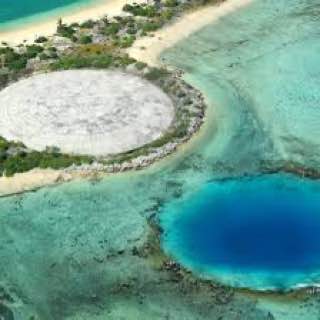
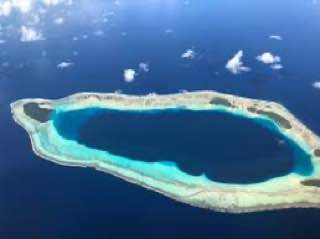
In 1946, the United States selected Bikini Atoll as the site for nuclear tests due to its remote location. This decision would have lasting impacts on the atoll’s environment and the people who lived there. Between 1946 and 1958, the U.S. conducted 23 nuclear tests at Bikini, including some of the most powerful explosions in history. The tests were part of a broader effort to develop and refine nuclear weapons during the Cold War.
Key Tests at Bikini Atoll:
- 1946: Operation Crossroads – This was the first series of nuclear tests at Bikini Atoll, including two major detonations, Able and Baker. These tests were designed to assess the impact of nuclear explosions on naval vessels.
- 1954: Operation Castle – The Castle Bravo test, the largest nuclear test ever conducted by the U.S., had unexpected consequences, with radioactive fallout spreading across the region and even affecting nearby countries.
- 1958: Operation Hardtack – This series of tests involved multiple nuclear explosions at Bikini Atoll, continuing the U.S. military’s efforts to develop nuclear technology.
The tests were intended to demonstrate the power of nuclear weapons, but they left behind a lasting environmental and social impact, particularly on the native people of Bikini Atoll.
The Displacement of the Bikini People
In 1946, the U.S. government moved the people of Bikini Atoll to other islands in the Marshall Islands to make way for the nuclear tests. The people were promised that they would be able to return once the tests were completed. However, the radiation contamination and environmental damage left the atoll uninhabitable, and the people of Bikini were never able to return home.
The Bikini people were relocated to Kili Island, a small, isolated island with limited resources. Over the years, many of the displaced people were moved again, but the legacy of being forced from their homeland remains a painful chapter in their history. The Bikini people continue to struggle with the effects of the nuclear tests, including health issues related to radiation exposure, and the loss of their ancestral land.
The Road to Repopulation
In the years following the nuclear tests, efforts were made to clean up Bikini Atoll and make it habitable again. In 1997, the U.S. government declared that the atoll was “safe” for repopulation, but the reality is far more complicated. The island’s environment is still contaminated, and while some Bikini people have returned, many remain hesitant due to the ongoing risks posed by radiation.
The process of repopulating Bikini Atoll has been slow, and many families continue to live on other islands in the Marshall Islands. There are still concerns about the long-term health effects of radiation, and the scars left by the nuclear tests have not been easily erased. For many Bikini people, the idea of returning to their homeland is a complicated and difficult decision.
Can You Visit Bikini Atoll Today?
Bikini Atoll is still a place of historical significance, and while it is not fully open to the public, it is possible to visit the atoll as part of a guided tour. However, due to the ongoing radiation concerns, visitors must follow strict safety guidelines, and access to certain areas is restricted. Most tourists visit Bikini Atoll for its unique wreck diving opportunities, where you can explore the remnants of the ships and planes used during the nuclear tests.
The site is now part of the Republic of the Marshall Islands’ National Park system, and visitors can explore the area with a permit. While the atoll remains a place of historical importance, it’s essential to approach it with respect for the people and the history it represents.
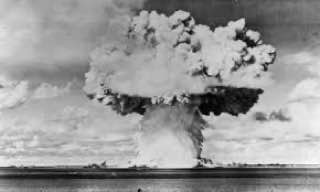
Bikini Atoll Government Office in Majuro
If you want to learn more about the history of Bikini Atoll, one of the best places to visit is the Bikini Atoll Government Office in Majuro, the capital of the Marshall Islands. The office provides educational resources about the nuclear tests and the ongoing struggles of the Bikini people.
It’s a great place to understand the full scope of the atoll’s history and the impact of the nuclear tests on the people of the Marshall Islands.And this can be arranged for tourists, although we do not visit on the Least Visited Countries Tour.
The Continuing Struggle for Justice
The people of Bikini Atoll have long sought recognition and compensation for the suffering they endured as a result of the nuclear tests. The U.S. government has provided some financial compensation to the people of the Marshall Islands, but many feel that it has not been enough to address the long-term effects of the tests. The Bikini people continue to fight for justice, and the government of the Marshall Islands has called for further support to help those affected by radiation exposure.
While there have been some efforts to clean up the atoll and make it safe for future generations, many Marshallese people remain skeptical about the feasibility of repopulating Bikini Atoll. For some, the emotional and physical scars left by the nuclear tests are too great to overcome.
Conclusion
The story of Bikini Atoll is one of both tragedy and resilience. The Bikini people have faced immense challenges, from being displaced from their homeland to dealing with the long-term effects of nuclear testing. While there have been efforts to restore the atoll, the road to repopulation remains slow, and the legacy of the nuclear tests continues to affect the lives of the people of the Marshall Islands.
For those interested in visiting Bikini Atoll, it’s important to approach the site with respect for its history and the struggles of the people who lived there. The atoll is a reminder of the human cost of nuclear testing and the ongoing fight for justice and recognition. Whether you’re diving in its waters or visiting the Bikini Atoll Government Office in Majuro, it’s clear that Bikini Atoll is more than just a place—it’s a symbol of resilience and the ongoing pursuit of justice for the people of the Marshall Islands.
Click the link for our bespoke tours to the Marshall Islands.



